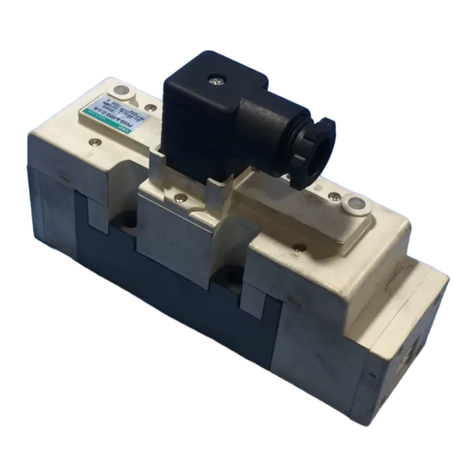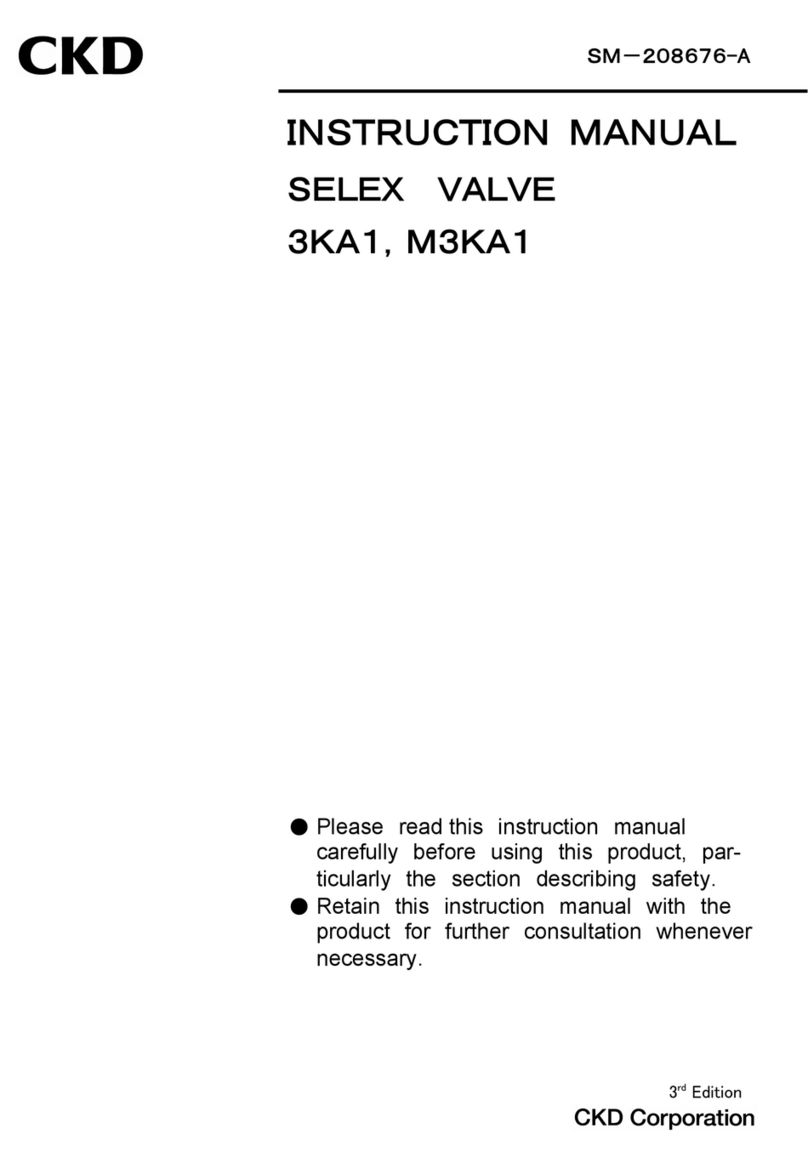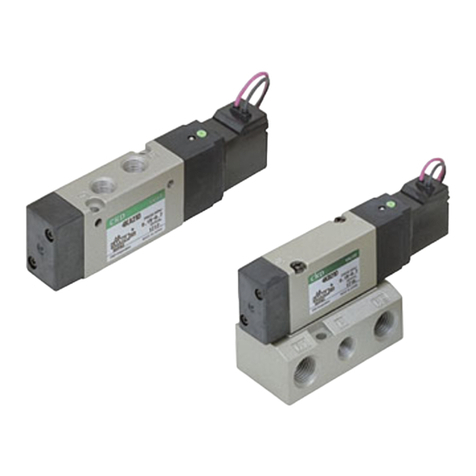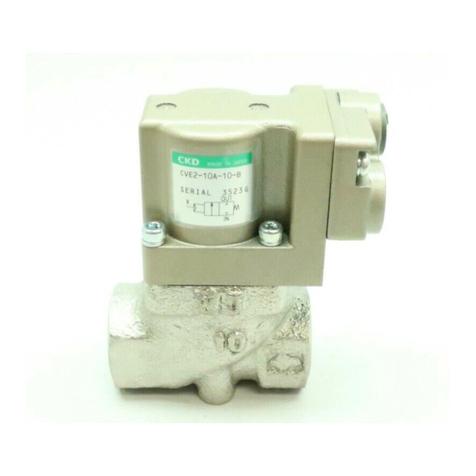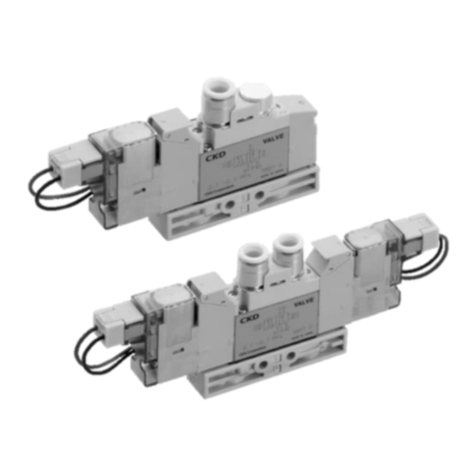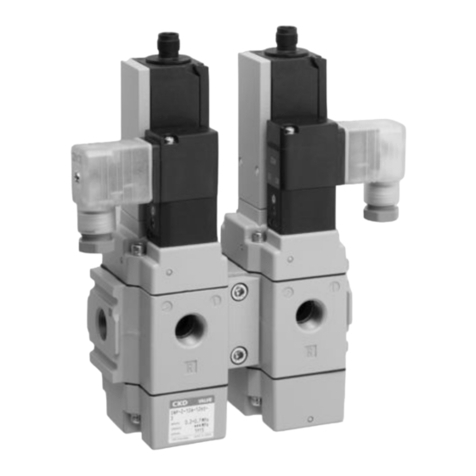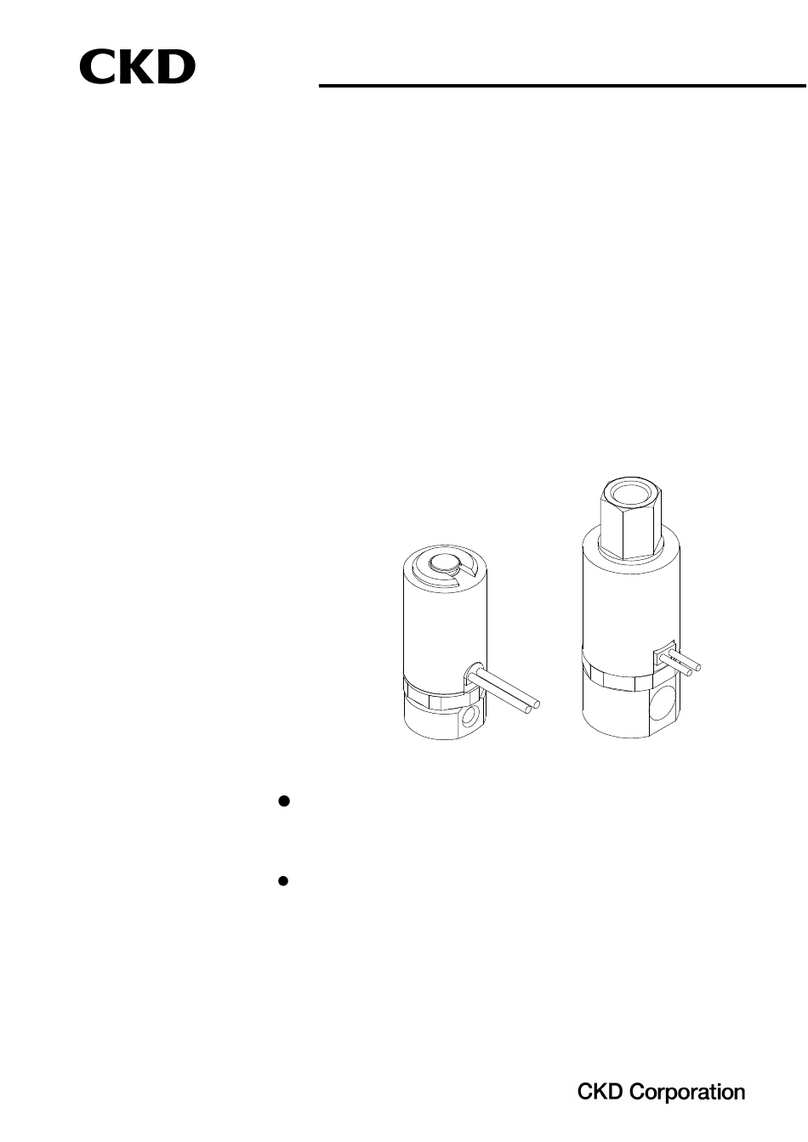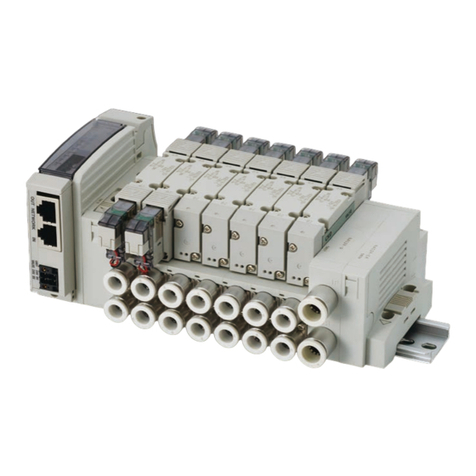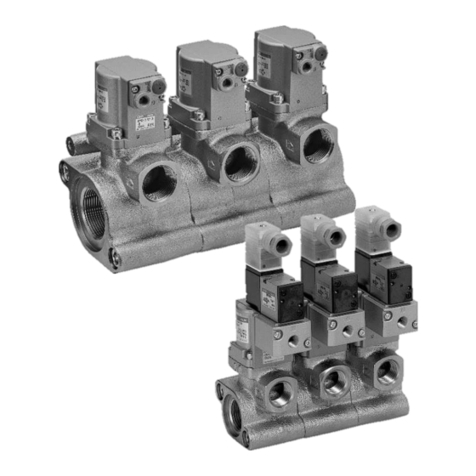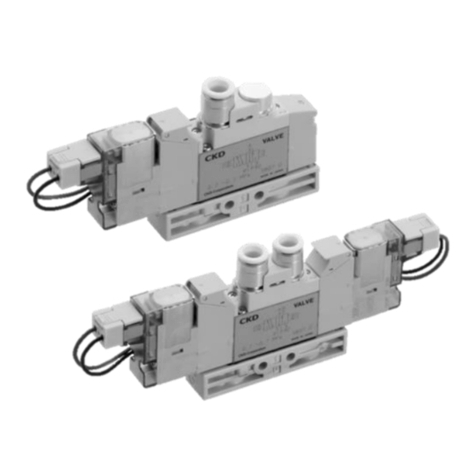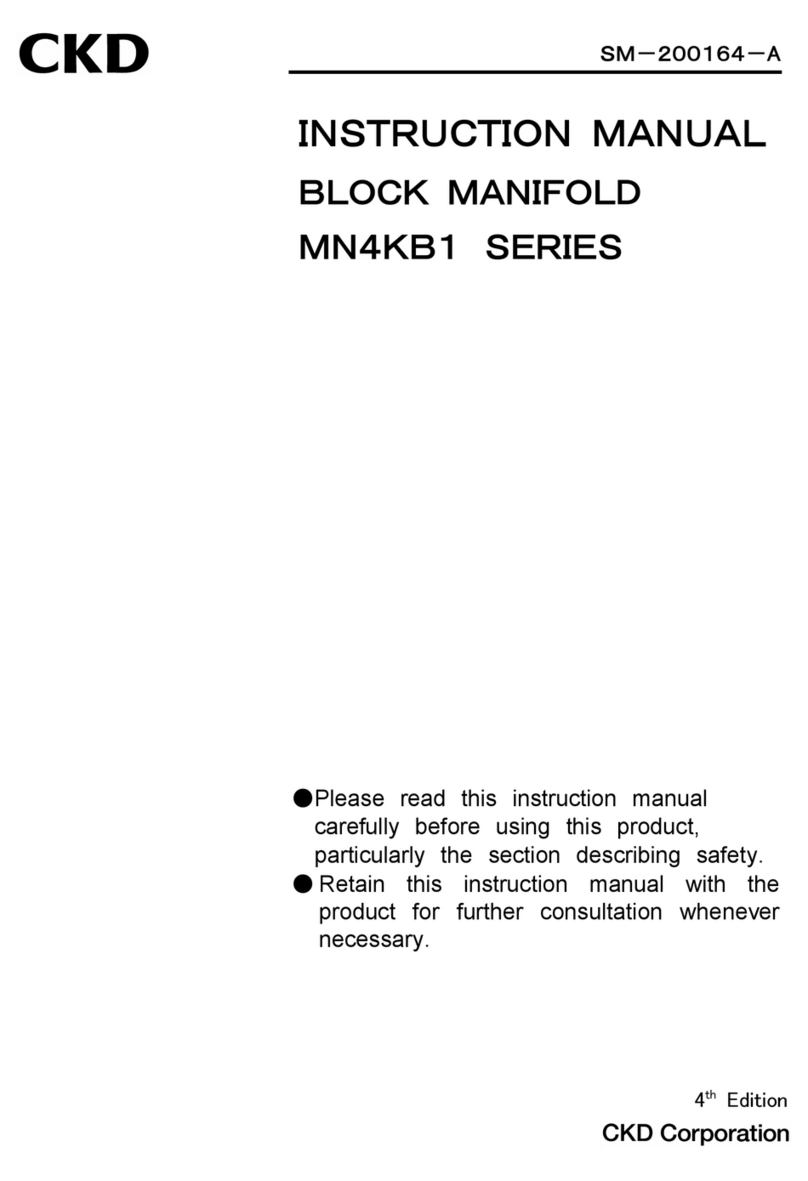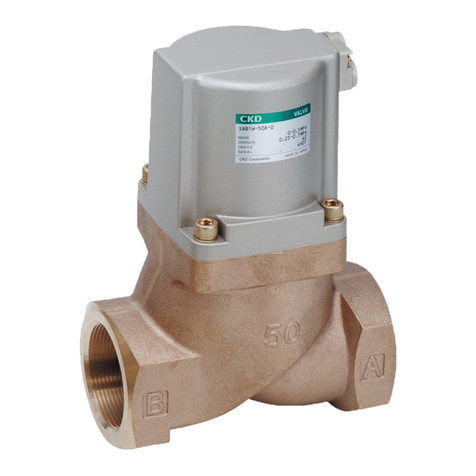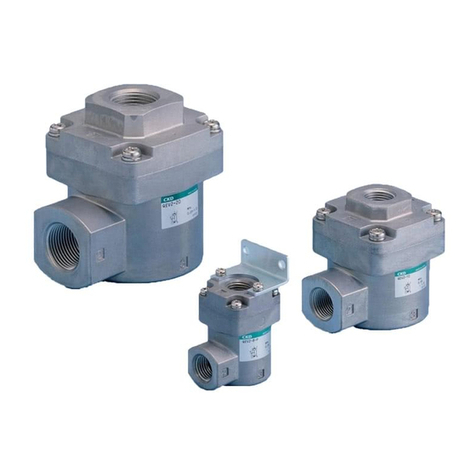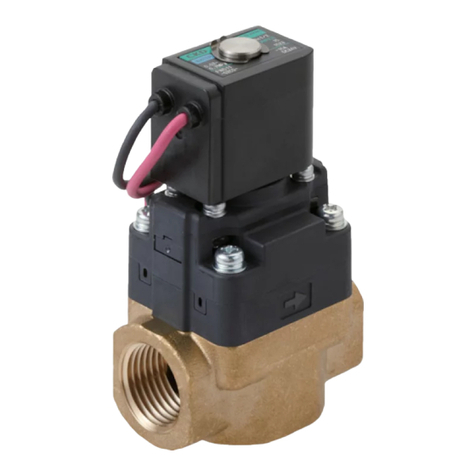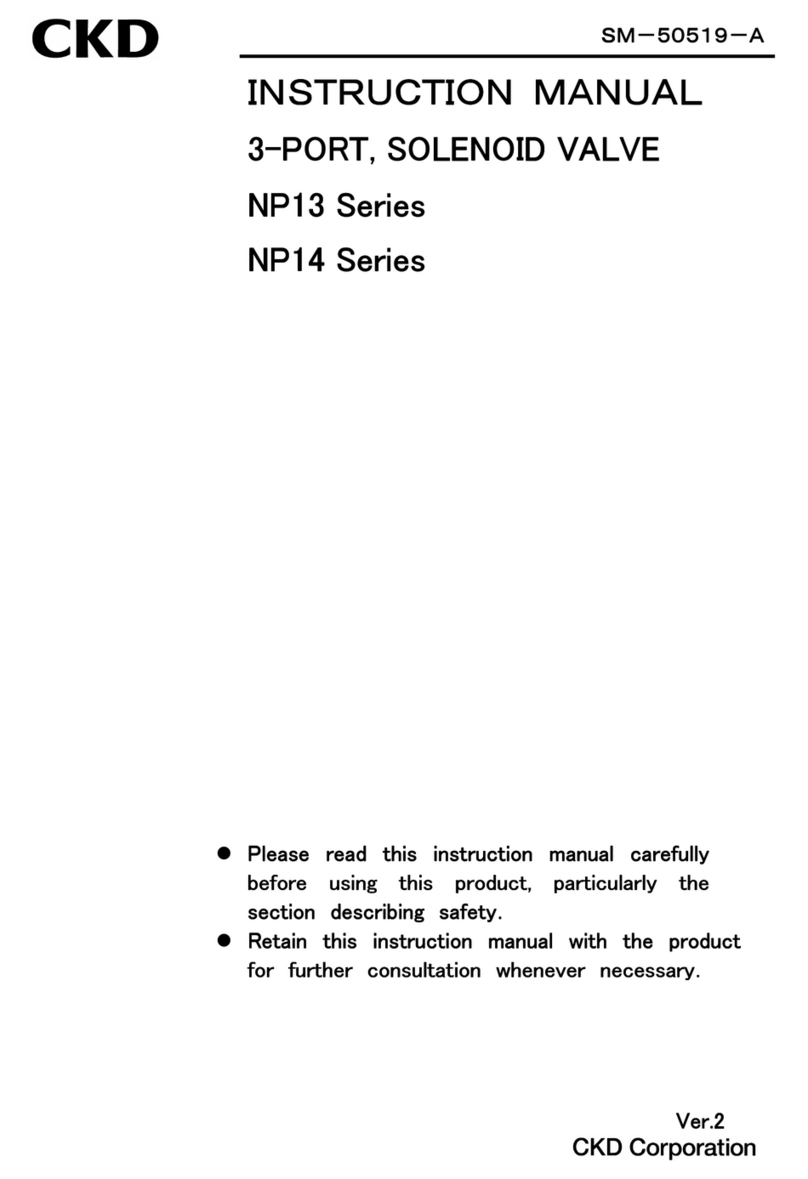
SM-50767-A
- 2 -
Safety precautions
All customers designing and manufacturing a device which uses CKD products have the
responsibility to, and are expected to, manufacture a device that is safe by checking that the safety of
the system operated by the following components is secured: the device mechanism, the gas
combustion equipment circuit, and the electrical control that controls these components
It is important to select, operate, handle, and maintain CKD products appropriately to ensure that
each CKD product is used safely
Please observe all warnings and precautions for each CKD product to ensure the safety of not only
the CKD products but also your device containing CKD products
1. This product has been designed and manufactured as a component for industrial use gas
combustion equipment. It must only be handled by persons with sufficient relevant
knowledge and experience.
2. se this product within its specifications.
This product must be used within its stated specifications Do not attempt to alter or modify the product
Moreover, this product is intended to be used as a component for industrial use gas combustion equipment It is not
intended for use outdoors or in applications listed below (However, this product may be used under some unintended
conditions if the customer consults CKD prior to use, understands and agrees to the product specifications, and
provides safety measures that avoid risks in the event of failures )
(1) Applications that require safety which include nuclear power applications, railroad systems, aviation systems,
ships, vehicles, medical equipment, any equipment or application that involves direct contact with food and
beverage, amusement equipment, emergency shutoff circuits, press machines, brake circuits, and safeguards
(2) Applications where serious risks to human life and/or property are expected and safety is especially required
3. Observe all applicable organization standards and regulations to ensure safety in device
design and control.
Applicable organization standards and regulations include:
- JIS B 8415, General Safety Code for Industrial Combustion Furnaces
- Safety Technology Index for Industrial Gas Combustion Equipment (The Japan Gas Association)
- Safety Technology Index for Gas Boiler Combustion Equipment (The Japan Gas Association)
- High Pressure Gas Safety Law, Occupational Safety and Health Act, and other rules, organization standards, and
regulations concerning safety
4. Do not install or use this product or remove any equipment until safety is confirmed.
(1) Conduct inspection and services on machines and devices after safety of all systems related to this product is
confirmed
(2) Handle with care as there may be hot surfaces and hot parts even after operation has stopped
(3) Before inspecting or servicing this product, stop supplying gas and turn off power to the applicable equipment
Be careful of leaks
5. Provide overcurrent protection device.
Provide overcurrent protection device (such as a molded case circuit breaker and circuit protector) and wire the
operating power source according to JIS B 9960-1: 2008, Safety of Machinery – Electrical Equipment of Machines –
Part 1: General Requirements
6. Observe all safety instructions in the pages that follow to prevent accidents.
WARNING
